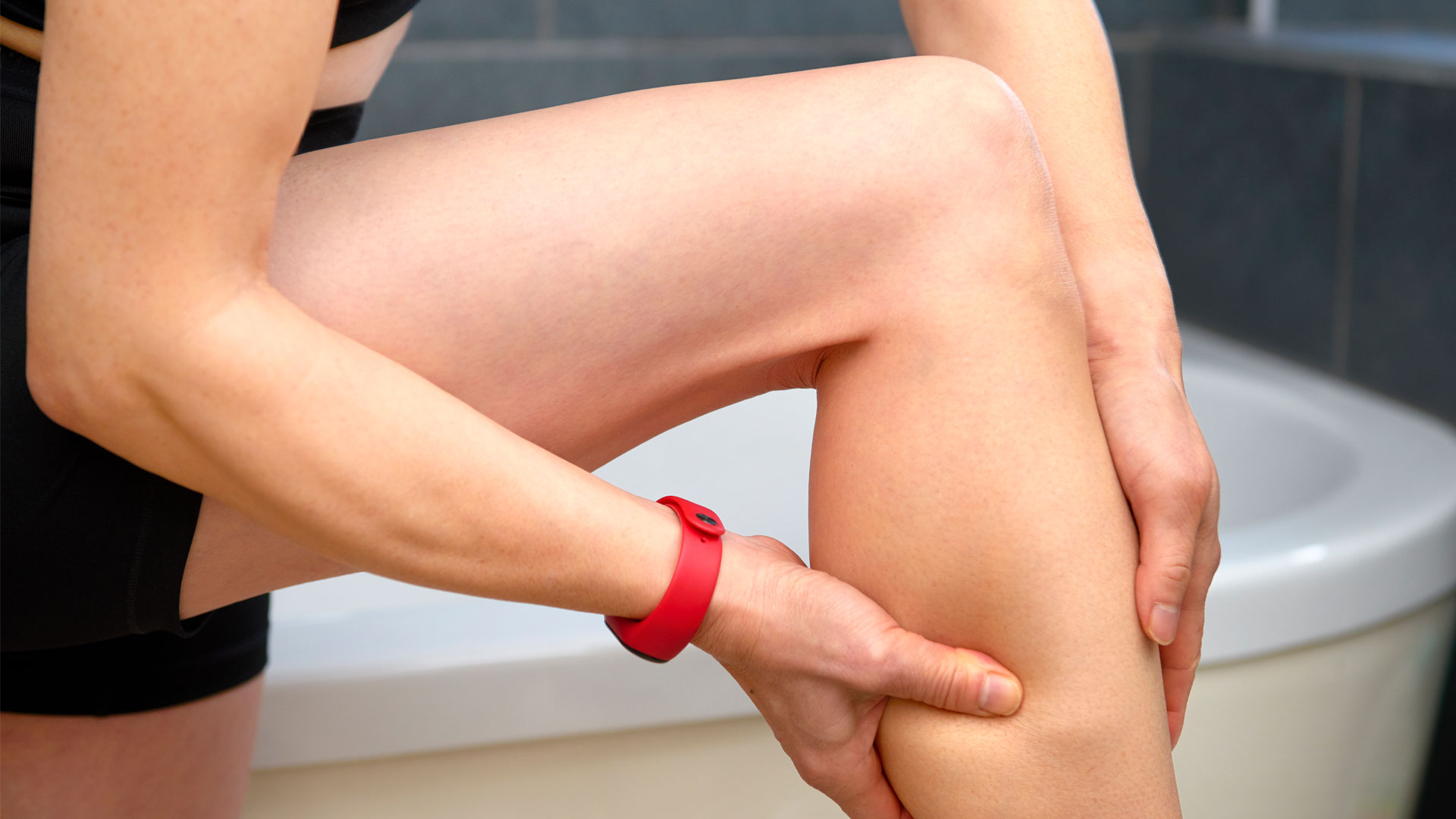What is myofascial release therapy?
Struggling with a stubborn knot in your back? Myofascial release therapy might just be the solution you’ve been looking for

There’s nothing worse than a tight, sore muscle that lingers for days or even weeks on end. But while we’ve all had tight muscles after a workout, some forms of muscle tightness require more intensive therapy. That’s where myofascial release therapy comes in.
Myofascial release therapy is a specific type of physiotherapy given by a trained professional such as an osteopath, chiropractor, massage therapist or physiotherapist. Self-myofascial release can also be performed at home, using one of the best massage guns. More intensive than a therapeutic or Swedish massage, myofascial release therapy aims to target the interconnective tissue that knits together the muscles, also known as the fascia. Myofascial release therapy is usually reserved for people with cases of chronic or ongoing muscular pain.
Curious to find out whether myofascial release therapy is the treatment you’ve been looking for? Here is everything you need to know about the treatment.
What is myofascial release therapy?
"Myofascial release therapy is a massage technique used for relieving pain and muscle tension related to fascial immobility," Jonathan Wills, Director of Operations and Licensed Massage Therapist at The Woodhouse Day Spa, tells LiveScience.
Myofascial release therapy is a form of psychotherapy and massage that targets the myofascial tissue. The goal of the treatment is to improve pain, soreness, and mobility issues. Usually, the treatment is recommended for people with issues or tightness in the interconnective myofascial tissue — these issues usually can’t be solved by a regular massage.

Myofascial release therapy is more intense and targeted than a relaxing massage. In a massage, the therapist typically uses rubbing, sliding, and kneading motions to target tightness and knots in the muscle. This type of therapy is recommended for people with muscle tightness from things like exercise, poor posture or stress.
Myofascial release therapy, on the other hand, involves the application of sustained, targeted pressure of three to five minutes on the fascia that connects the muscles and bones. Ideally, this sustained pressure will release the tissue and improve pain and mobility issues.
Get the world’s most fascinating discoveries delivered straight to your inbox.
This type of therapy is less relaxing or enjoyable than a massage, but for people with chronic pain or deeper fascia injury that regular massage doesn’t resolve, myofascial release therapy can be far more effective.
How does myofascial release therapy work?
"The therapy applies moderate, yet sustained and direct pressure to connective tissue (fascia) that surround your muscles and bones," says Wills. By applying sustained pressure to the muscles, myofascial release therapy is designed to slowly soften the connective tissue that holds the muscles and bones together. When this connective tissue is injured or tightened, you may notice long-lasting pain or reduced joint mobility — myofascial release therapy should improve both.
Myofascial release therapy can also be done at home using a tool like a foam roller or a massage gun to apply pressure to the muscles and interconnective tissue. This form of myofascial release can be particularly helpful for athletes struggling with fascial tension as a result of repetitive muscle use.
On a scientific level, myofascial release aims to soften the three layers of the fascia: the superficial layer, the layer of potential space, and the deep layer. This means that the treatment operates on a level that is physically deeper than a regular surface level massage.

What are the benefits of myofascial release therapy?
Myofascial release therapy has been shown to provide relief for a range of long term conditions involving the fascia. "It can help to reduce pain and release restrictions more commonly known as 'knots,' enhance movement and muscle function, and improve blood flow throughout the body," Wills says. "It can also increase muscle recovery, sleep, reduce anxiety and improve quality of life."
One 2021 study found that the treatment could significantly improve discomfort and mobility issues in cases of chronic lower back pain. A 2022 study also found that self-myofascial release using foam rollers greatly improved muscle flexibility in long-distance runners, particularly in the calves, hamstrings, hips, and glutes.
However, not all results are so promising. Myofascial release is also thought to be an effective treatment for people with orthopedic conditions — however, as one 2013 review pointed out, there is still little thorough scientific evidence to support this theory. The study concluded that so far the research was promising, and that with a good therapist, it could be an effective way to treat pain from orthopedic conditions.

Additionally, a more recent 2017 review of myofascial release therapy found that the treatment didn’t result in noticeable improvements in people with chronic pain or fibromyalgia.
And while myofascial release therapy does have its benefits, there are also some risks attached to the treatment:
- Bruising - Because of the intense and sustained pressure applied to target areas of the body during myofascial release therapy, you may be left with some bruising — this is usually nothing to worry about, but can be uncomfortable in the days following your session.
- Soreness - Myofascial release therapy can also leave you with superficial soreness. Hopefully, within a few days, this soreness and your underlying pain will both have improved.
- Internal bleeding - In rare cases, inexperienced myofascial therapy practitioners can cause internal bleeding.
- Sleep disturbances - The release of your fascial tissue may also make it difficult for you to get comfortable at night, leading to poor sleep.
These side effects are extremely rare. Nevertheless, it’s important to visit a certified physiotherapist or massage therapist for your myofascial release therapy to reduce the risks.
Myofascial release therapy: the verdict
Experts and studies have shown that myofascial release therapy is a promising and often effective treatment for chronic pain and long term stiffness. The treatment goes deeper than a regular massage and releases the connective tissue rather than the muscles.
Because myofascial release therapy is an intense, sometimes even unpleasant treatment that can come with some risks, we recommend speaking with your doctor, osteopath, or physiotherapist to make sure it’s the right choice for you.

Meg Walters is a freelance journalist and features writer. Raised in Canada and based in South East London, Meg covers culture, entertainment, lifestyle, and health. Her work has appeared in Cosmopolitan, i-D, Refinery29, Stylist, GQ, Shondaland, Healthline, HelloGiggles and other publications.
When she's not writing, Meg is probably daydreaming about traveling the world, re-watching an old rom-com with a glass of wine, or wasting time on Twitter, where you can follow her @wordsbymeg.


